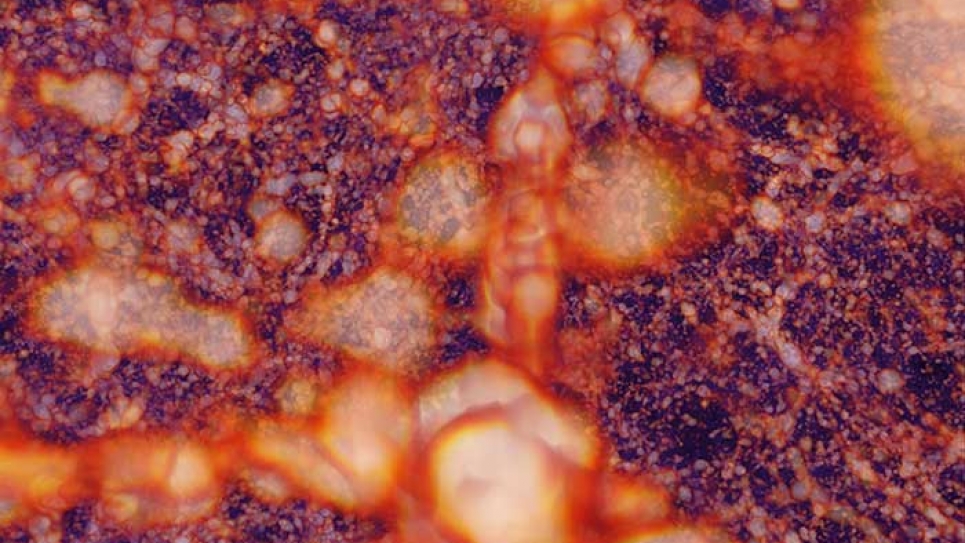
Department of Energy to Again Showcase Computational Science Expertise at SC13 Conference
National Labs to Highlight HPC for a Greener, Smarter, Safer World
After unexpectedly missing the opportunity to exhibit their expertise at SC12, the Department of Energy National Laboratories will return to the conference exhibition at SC13, to be held Nov. 17-22 at the Colorado Convention Center in Denver.
The national labs have been a driving force at the conference from the outset, when computational scientists from Los Alamos, Lawrence Livermore and others launched the initial conference in 1988 at a hotel conference center in Orlando, Fla. Since then, the labs have presented their work in both the conference technical program and in the exhibition.
But unlike in years past, at SC13 the national labs will be sharing a booth, featuring presentations, electronic posters, 3D simulations, demonstrations and roundtable discussions. In all, 15 different laboratories will be participating in the booth (1327) under the theme of “DOE: HPC for a Greener, Smarter, Safer World.”
The combined DOE booth will comprise “greatest hits” packed in one space, clearly conveying the impact of the department’s programs.
National laboratories operated by the DOE Office of Science are home to some of the world’s leading supercomputing centers for open scientific research: the National Energy Research Scientific Computing Center (NERSC) and the Argonne and Oak Ridge Leadership Computing Facilities. The National Nuclear Security Administration labs: Lawrence Livermore, Los Alamos and Sandia national laboratories, have consistently deployed leading edge, world-leading systems to meet their mission needs.
Additionally, many of the labs have active research programs in applied mathematics, scientific application development, computer science and energy efficient computing.
These facilities and capabilities will be highlighted in a booth program featuring presentations by HPC experts, electronic posters, demonstrations, roundtable discussions and a 3D display showing simulations and modeling.
Featured presentations by leading HPC experts include:
- Argonne's Katrin Heitman on”Exploring the Dark Universe;”
- Scott Klasky from Oak Ridge, who will talk about the R&D 100-winning ADIOS, an adaptable I/O system;
- Berkeley Lab’s Kathy Yelick, who will talk about getting big science out of big data;
- Fermilab’s Robert Roser on “Particle Accelerators, Quarks, and How We Make Scientific Discoveries;”
- Los Alamos' Tim Germann on ”Probing the Response of Materials to Extreme Conditions at the ALCF;”
- Los Alamos' Bill Archer on ”Seventy Years of Computing at Los Alamos;”
- Sandia's Mike Heroux on “Preparing for Next Generation HPC using Miniapps”
- Aronne's Paul Messina on "Advance Your Career, Accelerate Your Research at the ALCF;"
- Idaho’s Derek Gaston on "MOOSE Massively Parallel Multiphysics Framework;" and
- Brookhavens’ Robert Harrison, on “Big Science, Big Data, Big Compute.”
A demo station in the booth will feature interactive programs, including:
An Interactive History: Supercomputing at Los Alamos National Laboratory, which traces computing at the New Mexico lab from 1943 to the present.
The MyESnet Portal, which visualizes the real-time data traffic flowing in and out of all of the DOE science laboratories as well as traffic activity associated with the National Energy Research Scientific Computing Center and the Argonne and Oak Ridge Leadership Computing Facilities.
The Stack Trace Analysis Tool (STAT), a highly scalable, lightweight debugger for parallel applications developed as a collaboration between the Lawrence Livermore National Laboratory, the University of Wisconsin, and the University of New Mexico.
The staff of ESnet, DOE’s 100 Gbps science network, will host a roundtable discussion on “The Science DMZ: A Network Design Pattern for Data-Intensive Science.”
The DOE Office of Science will be represented by Ames Laboratory; Argonne, Brookhaven, Lawrence Berkeley, Oak Ridge and Pacific Northwest national laboratories, Fermi and SLAC national accelerator laboratories; Princeton Plasma Physics Laboratory; and Thomas Jefferson National Accelerator Facility. The National Nuclear Security Administration will be represented by Lawrence Livermore, Los Alamos and Sandia national laboratories. The Office of Energy Efficiency and Renewable Energy will be represented by the National Renewable Energy Laboratory; the Office of Environmental Management by Savannah River National Laboratory and the Office of Nuclear Energy by Idaho National Laboratory.
